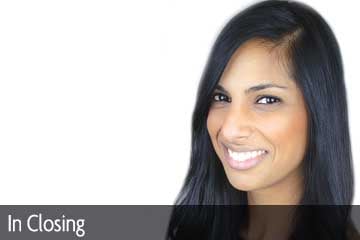
In seeking to find meaning in being a lawyer, there are ways to also find a path to the right job for the place you are in right now.

In seeking to find meaning in being a lawyer, there are ways to also find a path to the right job for the place you are in right now.
At one point or another, reflecting on what it means to be a lawyer and whether you are fulfilling this role for yourself is valuable, maybe even inevitable. The motivations to practise are endless, and I ascribe equal value to practising in alternate settings or tangential to the black letter. I hope sharing some of the tools that are working for me might support others in navigating the world of work at a time when it seems that nothing is immune from disruption.
I articled with a large, full-service law firm where I was exposed to multiple areas of law and even varied practice environments. I was fortunate to receive wonderful training and felt that, if I worked hard, I would eventually find my stride within a practice group. During this time, I had many moments questioning my relationship with private practice. While I do not believe our work necessarily defines us, there is evidence to suggest that a sense of purpose is directly related to our overall sense of well-being. Connecting purpose to my work quickly became my mission.
Meditation and pictures
I learned to meditate. I wasn’t and still am not very good at it. But the overall impact that this practice has on my career trajectory and personal life is real. My teachers asked me difficult questions — “Who are you?”, “What do you want?”, “What do you need?”— none of which had right answers. Yet, I didn’t have any answers. The more I practise, the more I trust that the answers will come in time. The unwinding, the slowing and calmness were not intrinsic to my natural state of being. The new pace helps with clarity and, I believe, guides my responses to everyday interactions.
I can’t even tell you how many diagrammatic depictions of prioritizing and career mapping I’ve seen in the past few years — Venn diagrams, pendulums, wave graphs and some truly effective pictorial brainstorm mapping. Career advice was delivered to me in pictures. I found going back to first principles using these simple pictures very useful.
After articling, I began exploring options that aligned with subject matter interests. In joining a legal clinic, I was immersed in a world of practitioners and not-for-profit organizations doing rights-based work in Canada and parts of Latin America. Lawyers from Bay Street and class action firms in varied jurisdictions dedicated their time through pro bono efforts to facilitate research, draft legal documents and litigate files with the clinic. The director, a fabulous lawyer and professor, exposed me to strategic considerations I wasn’t privy to in firm life.
Reflection and listening
I was surprised by some of the answers or options that came to me. Reflection, as a tool, may be an obvious one, but whatever form it takes, digesting, connecting and reconnecting helps me stay motivated and agile. Reflection also supports the gravity of my gratefulness to those who shared and continue to share their paths with me.
I found that most people were willing to share their journey. I met securities lawyers who told me that their advisory work did not require considerations of environmental or social issues. These were strategic and operational considerations, not yet legal ones. I met with environmental lawyers who were deeply invested and working with energy regulations and had clarity around the complexities of transitioning to a low-carbon economy. Therefore, while the legal profession offered a variety of perspectives from which to tackle issues, in my purview, the truly interdisciplinary nature of problem-solving I was seeking seemed to reside with decision-makers elsewhere. I was able to join the Philippe Kirsch Institute as a legal fellow in business and human rights to begin disseminating knowledge on these topics.
By identifying distinct gaps in my own knowledge involving the contours, integration and breadth of adoption of responsible investing, I made a conscious commitment to ESG analysis. And, now, in an effort to contribute thoughtfully and with purpose, I recently joined the Ontario Teachers’ Pension Plan on the corporate governance team as an investment associate, public equities. Using these tools helped me understand how being a lawyer makes sense for me.
Miekela Singh is an investment associate, public equities, with the Ontario Teachers’ Pension Plan on the corporate governance team.